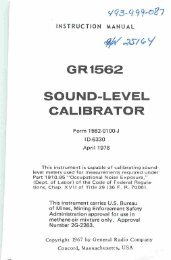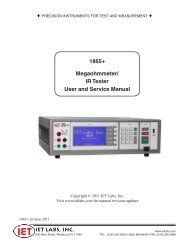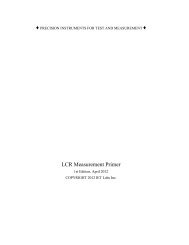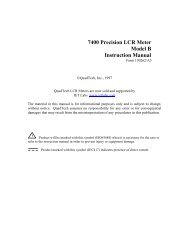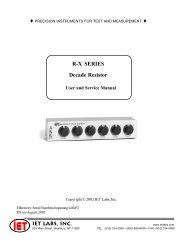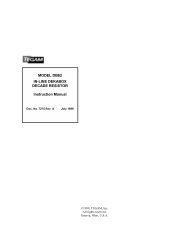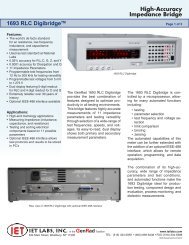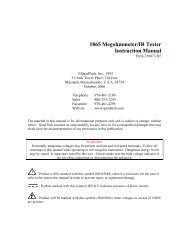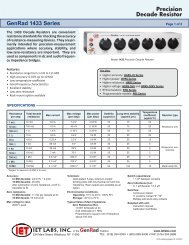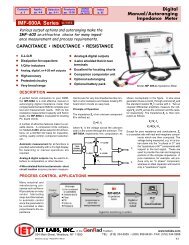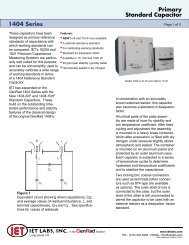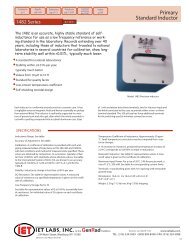Handbook of High Speed Photography - IET Labs, Inc.
Handbook of High Speed Photography - IET Labs, Inc.
Handbook of High Speed Photography - IET Labs, Inc.
Create successful ePaper yourself
Turn your PDF publications into a flip-book with our unique Google optimized e-Paper software.
5.2.2 MECHANICAL CONTACTS. Mechanical contacts, the most<br />
easily employed triggering device, are suitable for both nonrepetitive<br />
and repetitive motion. The main drawback <strong>of</strong> mechanical contacts is<br />
their tendency to produce spurious flashes due to contact bounce. Nor<br />
mally open contacts are less satisfactory than normally closed contacts<br />
because they are more likely to have these bounce problems. Expend<br />
able contacts may be made <strong>of</strong> wire or aluminum foil in either configura<br />
tion. A few examples <strong>of</strong> mechanical contacts are: a wire that is broken<br />
by the motion <strong>of</strong> the subject which, in turn, opens or closes an electri<br />
cal circuit, e.g., a wire carrying current cut by a bullet; two pieces <strong>of</strong><br />
aluminum foil, to which current-carrying wires are attached, which the<br />
subject presses together; and a thread attached to the subject used to<br />
pull the firing switch <strong>of</strong> the camera. There are many other triggering<br />
techniques. Photographers <strong>of</strong> ballistics <strong>of</strong>ten use a paper that has a<br />
metal foil coating on both sides. Triggering occurs when the projectile<br />
passes through the paper and makes contact with both foil coatings.<br />
Figure 5-1. A playing card being split by a .22-calibre rifle bullet traveling at<br />
approximately 1150 feet per second. Note how the slug has tipped and started<br />
to tumble from contact with the card.<br />
This action was photographed with a single high-intensity flash from a 1531-A<br />
Strobotac® electronic stroboscope. The reflector was removed, and the flash<br />
lamp was located about 14 inches from the subject. To trigger the flash, a mi<br />
crophone was placed forv/ard <strong>of</strong> the rifle muzzle and connected to the Strobotac<br />
through a small voltage amplifier. The camera lens (135-mm Schneider, with a<br />
Kodak PORTA +3 close-up attachment) was set at f/8 and located about 10<br />
inches from the card. (Polaroid Type 47 film, 3-microsecond exposure.)<br />
42




